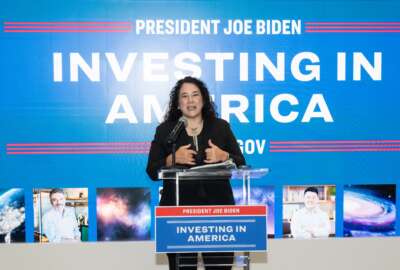Insight by NCMA
How to cut the chances of getting hit with a protest
At the recent National Contract Management Association’s World Congress in Nashville, Michelle Miller, senior procurement analyst and team lead for the Army’s...
Just as no car is rustproof, no house fireproof, nor any boat sink-proof, no federal procurement is protest proof. But federal contracting teams can do much to minimize the chances of protests at the solicitation or award stage.
At the recent National Contract Management Association’s World Congress in Nashville, Michelle Miller, senior procurement analyst and team lead for the Army’s Procurement Support Directorate, outlined strategies for reducing protests.
Miller noted that, compared to the number of contract actions conducted by the government each year, the roughly 2,100 annual protests seem tiny. But they often have big leverage, affecting large-dollar, critical acquisitions or multiple-award vehicles potentially holding up programs and scores of companies other than the protestors.
Then there’s the personal side.
“If you happen to be the one who gets the protest, it can literally take over all of the contracting officer’s time dealing with a protest,” Miller said. “It’s time that could be spent doing other things. It can have a huge impact.”
A protest insulation strategy should start with reviewing why companies protest in the first place. Miller said it turns out, certain factors come up repeatedly.
At NCMA, Miller’s workshop focused on those very points.
“A lot of the tips that I am trying to give people for avoiding bid protests,” she said, “are really focused on, how do we work better as government to find solutions so that we’re not continually receiving the same types of protests over and over and over again, throughout different agencies.”
Miller cited one particular practice on the government’s part that tends to draw protests.
“We frequently see protests that deal with an evaluation factor that was not actually stated in the solicitation,” she said.
The evaluation team might, for example, inform bidders that they, the evaluators, will emphasize a bidders’ ability to move supplies quickly. Miller said that in one actual case, a bidder noted it had certain technical certifications that enhance its skill in moving supplies. The source selection group therefore wanted to award a contract to that bidder.
Miller added, “I said, ‘Well, here’s the problem. Our solicitation didn’t say you have to have this certification.’ We didn’t give any information ahead of time to let other offerors know that if they had certification, they could also get a strength.” Such bidders would likely have protested, she said.
Two-way street
This potential protest mechanism also works in reverse. Sometimes something will come up to produce a negative for a bidder, that might not have occurred to the agency when crafting the solicitation.
“Occasionally, we find that we don’t like a proposal for a reason that we can’t do anything about during the evaluation,” Miller said, “unless we go back and amend our own solicitation.”
Miller suggests a simple but profound remedy to these protest-provoking situations: talking to industry before drafting solicitations. By that she means a variety of mechanisms such as industry days to hear presentations, and open-ended queries about what the government has in mind. Miller recommends not restricting vendors to canned sets of questions, but rather “actually opening it up and saying, ‘Hey, here’s what we think our solicitation is gonna say, give us your questions.’”
She added, “Then we take the time to really read and actually respond to those questions and, if needed, adjust the solicitation.”
The process of thorough and open communication between government and industry should be part of basic market research, Miller said. Otherwise “we can continue in government as a whole to make the same errors over and over again.” She cautions, communications must be open to all comers, and not restricted to large or obvious players, if the government wants to both ensure fairness and lessen the chances of protests.
Can it really work? Miller pointed out that, using this communications approach, she once awarded a $10 billion indefinite delivery-indefinite quantity contract with multiple awards. It drew only one pre-award protest and a single post-award protest, and these resulted simply from diametrically opposed views by industry of how the award should have gone.
Miller added, “Fortunately, the [Government Accountability Office] agreed with my approach.”
Copyright © 2024 Federal News Network. All rights reserved. This website is not intended for users located within the European Economic Area.






